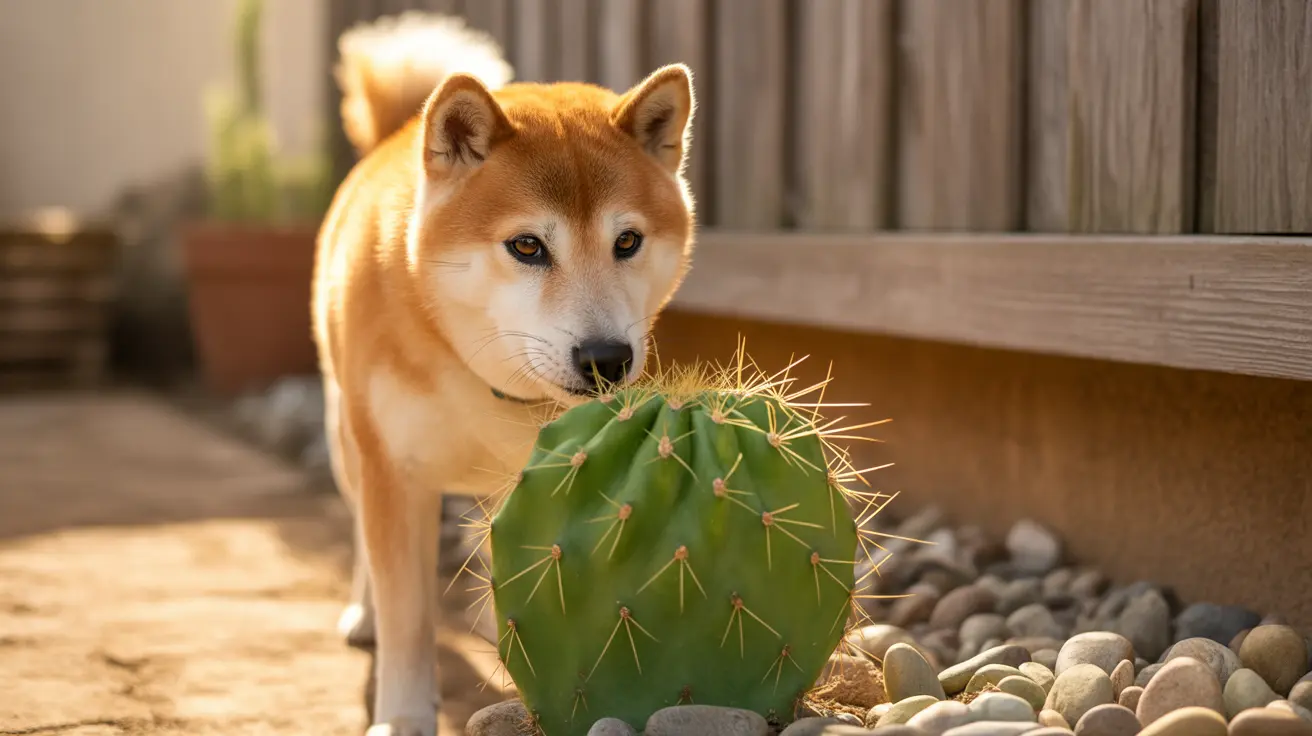As a pet parent, you may wonder about the safety of cacti if your curious canine encounters these spiky plants. While some cacti varieties are technically non-toxic, veterinary experts strongly advise against allowing dogs to eat or interact with any type of cactus due to significant health risks and minimal nutritional benefits.
Let's explore why cacti can be dangerous for dogs, what to do if your pet encounters one, and how to keep your four-legged friend safe around these plants.
Understanding the Risks of Cacti for Dogs
When it comes to dogs and cacti, there are several potential hazards that make these plants unsuitable for canine consumption or interaction:
Physical Injuries from Spines
The most immediate danger comes from cactus spines, which can cause serious injuries to your dog's:
- Mouth and throat
- Tongue and gums
- Paws and skin
- Digestive tract if swallowed
These sharp spines can become deeply embedded in tissue, potentially requiring veterinary intervention or even surgery for removal.
Digestive System Problems
Even if your dog manages to eat cactus flesh without spine injury, they may experience:
- Severe stomach upset
- Vomiting and diarrhea
- Intestinal blockage
- Difficulty eating or drinking
Toxic Effects and Chemical Irritation
Many cacti species contain substances that can be harmful to dogs:
- Irritating saps that cause mouth and stomach inflammation
- Toxic compounds that may lead to systemic reactions
- Substances that can trigger allergic responses
Safe vs. Dangerous Cactus Types
Generally Non-Toxic Varieties
While these cacti are considered non-toxic, they still pose physical risks and should be kept away from dogs:
- Christmas cactus (Schlumbergera)
- Prickly pear cactus (Opuntia) - though spines remain dangerous
Hazardous Species to Avoid
These cacti are particularly dangerous due to toxic properties or severe physical hazards:
- Pencil cactus
- Barrel cactus
- Saguaro
- Cholla
What to Do If Your Dog Encounters Cactus
Immediate Actions
If your dog comes into contact with a cactus:
- Carefully examine the affected areas
- Remove visible spines with tweezers if possible
- Monitor for signs of distress or illness
- Contact your veterinarian if multiple spines are present or if your dog shows concerning symptoms
When to Seek Emergency Care
Get immediate veterinary attention if you notice:
- Difficulty breathing or swallowing
- Severe pain or distress
- Multiple embedded spines
- Persistent vomiting or diarrhea
- Signs of allergic reaction
Prevention Tips
To protect your dog from cactus-related injuries:
- Keep cacti in elevated locations or behind barriers
- Choose pet-safe plants for accessible areas
- Supervise outdoor activities in areas where cacti grow
- Train your dog to avoid plants through positive reinforcement
- Create designated plant-free zones for your pet to explore
Frequently Asked Questions
Can dogs safely eat any types of cactus, like Christmas cactus or prickly pear?
While Christmas cactus and prickly pear are considered non-toxic, veterinarians recommend against feeding any cactus to dogs due to risks of physical injury and digestive problems.
What are the common symptoms if my dog eats or gets injured by a cactus?
Common symptoms include pawing at the mouth, drooling, vomiting, diarrhea, lethargy, and visible pain or discomfort. You may also notice swelling, bleeding, or embedded spines.
How should I remove cactus spines safely from my dog, and when do I need to see a vet?
Use tweezers to carefully remove visible, superficial spines. See a vet immediately if there are multiple spines, if they're deeply embedded, or if they're in sensitive areas like the mouth or eyes.
What are the main health risks of cactus ingestion for dogs, including toxicity and physical injuries?
Main risks include physical injury from spines, digestive tract damage, gastrointestinal upset, and potential toxic reactions from certain species' saps or compounds.
How can I prevent my dog from coming into contact with cacti at home or outdoors?
Keep cacti out of reach, use barriers or elevated planters, supervise outdoor activities, and train your dog to avoid plants. Consider removing cacti from areas your dog frequently accesses.
While cacti can be beautiful additions to your home or garden, it's crucial to prioritize your dog's safety by keeping these plants out of reach and seeking immediate veterinary care if exposure occurs. Remember, prevention is always better than treatment when it comes to protecting your furry friend from potentially harmful plants.






